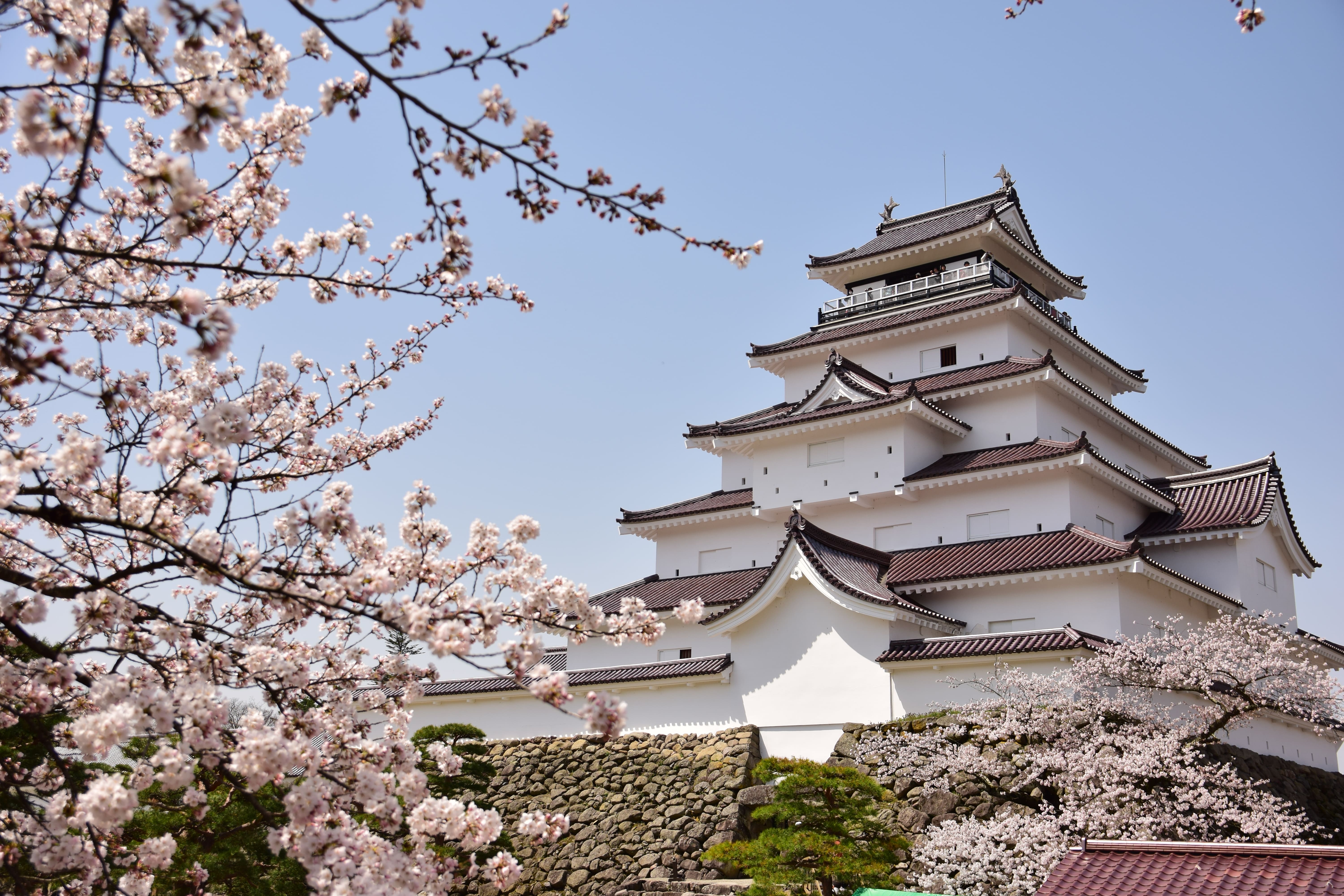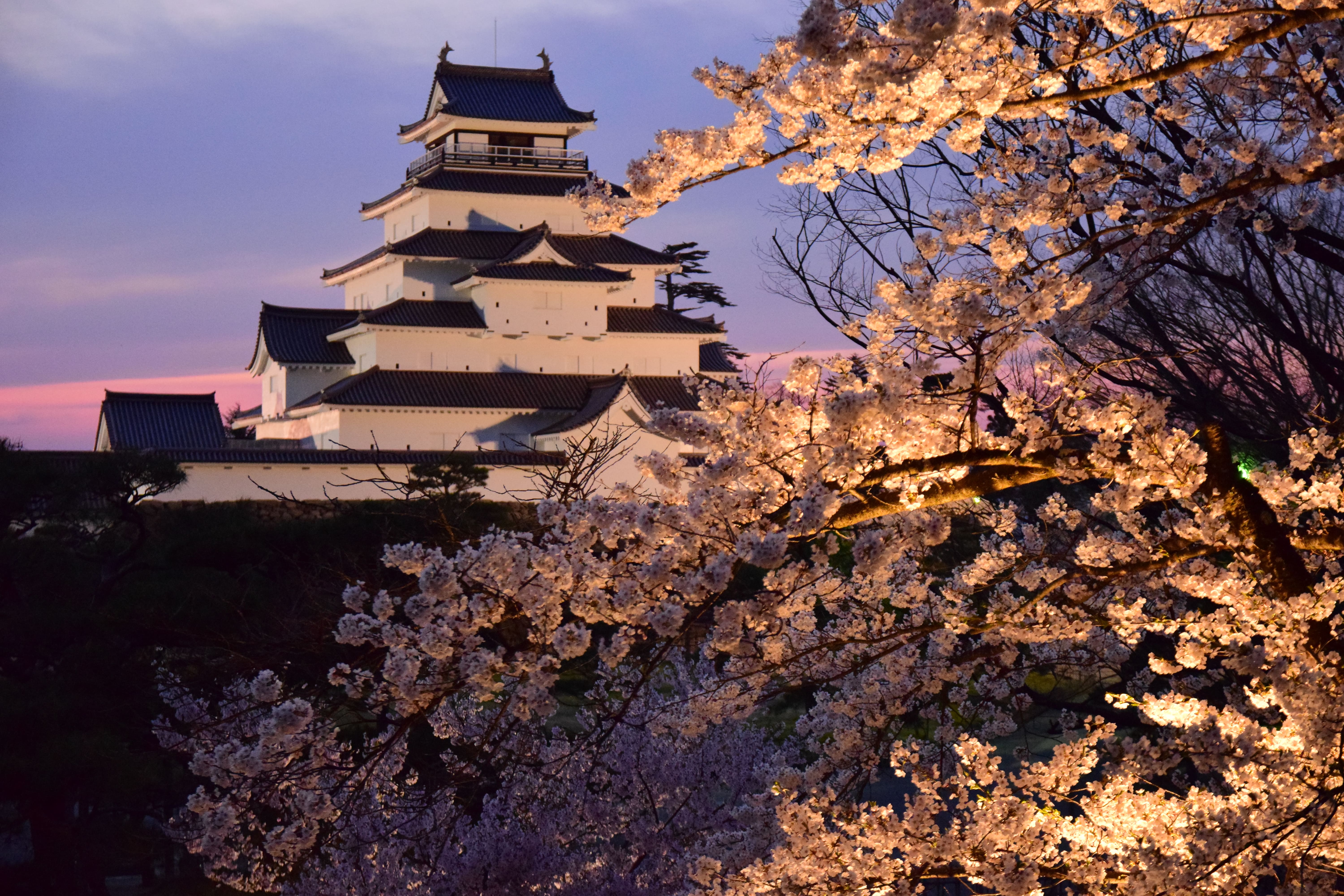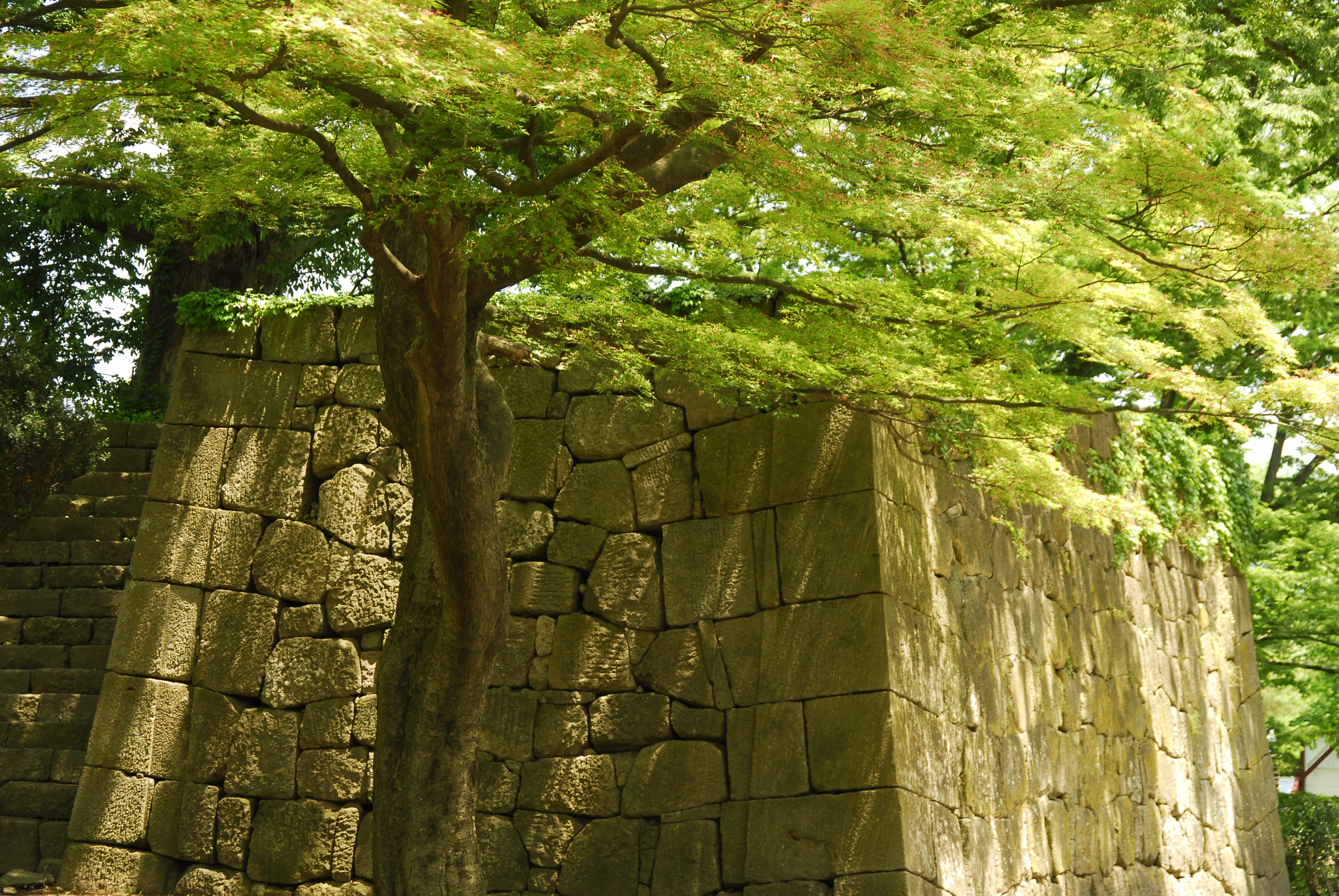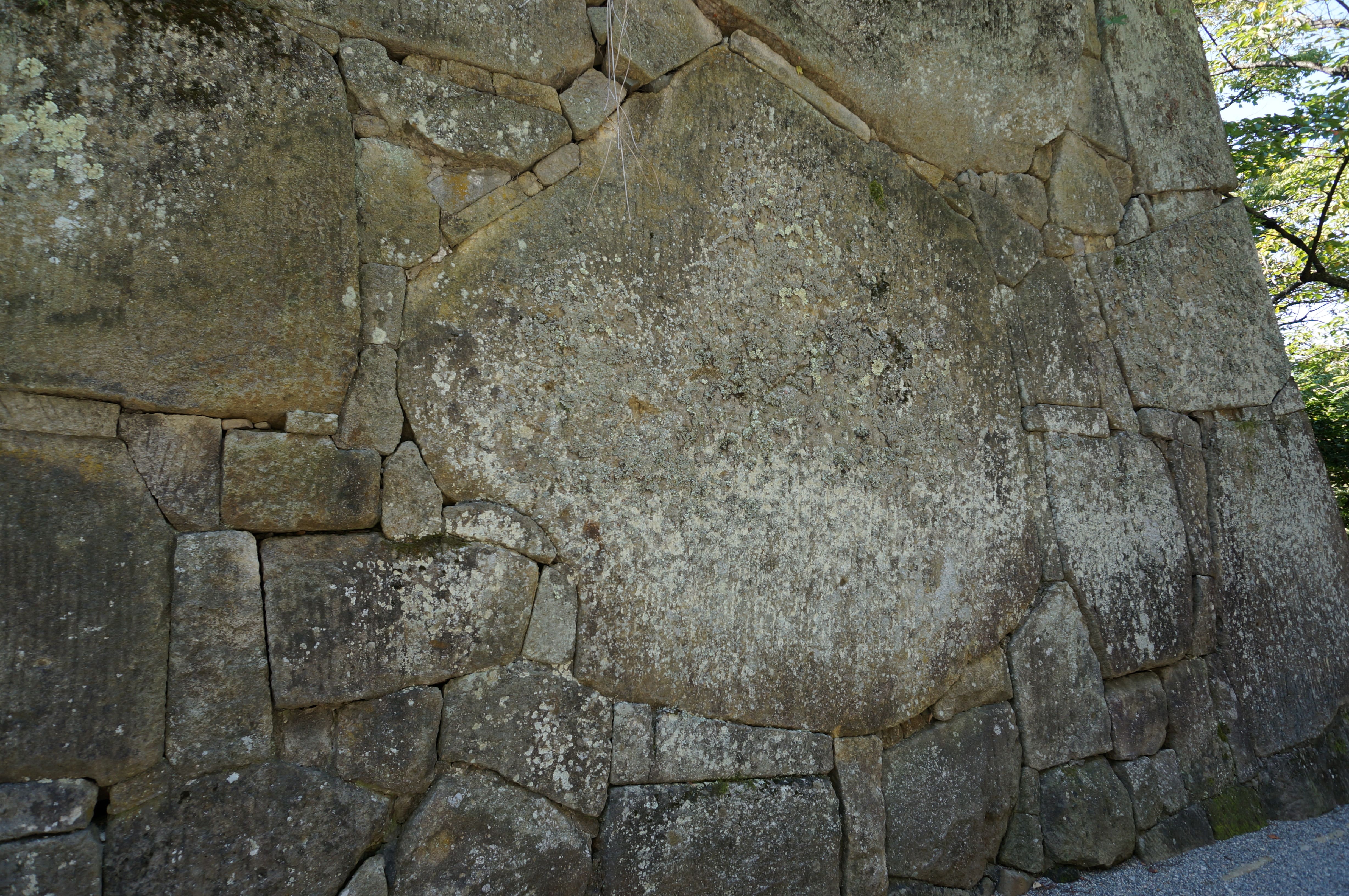2023.04.07 Tsuruga Castle

Tsuruga Castle is a cherished symbol of Aizu-Wakamatsu. The castle’s name comes from its resemblance to a crane (tsuru), as the white walls and red-tiled roof evoke the bird’s white feathers and red crown. Today, the castle and surrounding Tsuruga Castle Park are Aizu-Wakamatsu’s top tourist attractions. The park is a spacious oasis of plantings, lawns, and flowers, including many cherry trees.
Changing over time
The earliest castle on this site was built by the warlord Ashina Naomori (1323–1391) and was originally called Kurokawa Castle. The rulers of Aizu changed frequently over the centuries and the castle underwent various transformations. After he took control in 1590, Gamo Ujisato (1556–1595) had the castle rebuilt with an ambitious seven-story design for the main keep and renamed it Tsuruga Castle. Following damage from an earthquake, Lord Kato Yoshiaki (1563–1631) later replaced the keep with a five-story version surrounded by high walls and a moat.
Although considered one of the strongest castles of its time, it was later badly damaged in the Battle of Aizu in 1868. The emperor’s army surrounded the castle and battered it with their guns and cannons, forcing the Aizu to surrender. The Meiji Restoration (1868) ended the age of the samurai, and Tsuruga Castle was seen as a relic of the past by the new government. In 1874, the castle was largely demolished—a fate met by many Japanese castles of the day. Only the original stone walls were left standing.
Restored to former glory
In 1965, in accordance with the strong wish of the people of Aizu-Wakamatsu, Tsuruga Castle was carefully rebuilt, using traditional methods, to display its former glory. Gray tiles were used for the roof, but these were changed to red during further restorations in 2011 to replicate the color scheme of the castle in the mid-nineteenth century. Today, Tsuruga Castle is the only one in Japan with a red roof.
Fine architectural traditions
Some of the castle’s original stone parts were spared from destruction during the Boshin War (1868–1869) and provide good photo opportunities. Visitors can see examples of some of the various architectural techniques employed to create the castle’s imposing walls and moat. The stonework is considered among the finest examples in the Tohoku region.
Nozura-zumi (undressed stonework)
The castle foundation is built using rocks of various sizes and shapes in their natural state, filling in the gaps with smaller rocks and pebbles. This style of wall provided good drainage, as water runs through the gaps, but it was relatively easy for enemies to climb the walls and gain entry to the castle.
Uchikomi-hagi (rough-dressed stonework)
The rocks in this type of wall are roughly dressed, leaving fewer gaps. Stoneworkers shaped the rocks to make them easier to fit together.
Kirikomi-hagi (fine-dressed stonework)
As technology advanced, stoneworkers were shaping the stones to a uniform size by the early seventeenth century and workers could now create solid, high walls with tight seams. Water could cause structural damage if it seeped into the stonework, so workers also incorporated drainage openings to let water run through.
Yujoishi (Courtesan’s Rock)
This three-meter tall rock sits by Drum Gate, a large gate that was equipped with a drum to announce the coming of the lord or for emergencies. It is thought the rock was placed there to protect the castle from evil spirits, but it later served a different purpose. More than 1,000 laborers helped to repair parts of the castle walls following an earthquake in 1639. They had to transport a large number of huge stones from several kilometers away. Their supervisors had a beautifully dressed courtesan stand on the yujoishi and dance for the laborers. The sight inspired the laborers to push on with their strenuous work.
History with a view
The castle’s first four floors serve as a museum with information about the Aizu domain’s leaders and other important figures. Displays feature artifacts from the samurai era, including weapons and armor. Climb to the top floor for panoramic views around the castle.

This English-language text was created by the Japan Tourism Agency.


